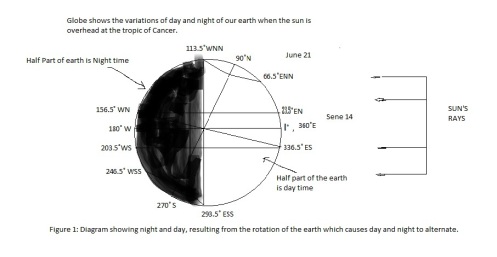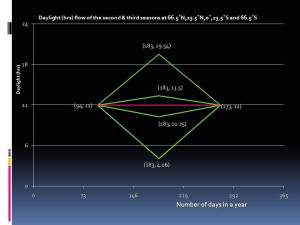NGS The Power of Compounding:
a). Discovering the tropics and rediscovering the temperates:
Although we are living in a digital age, about 26.11% of our land is called the tropics remain undiscovered. The tropics covers part of earth found between tropic of Cancer and tropic of Capricorn. It remains undiscovered, because both uses of Ethiopian calendar only in the current Ethiopia and Gregorian calendar in the tropics are unrealistic. i) Use of Ethiopian calendar only in the current Ethiopia is unrealistic because the circumference of the current Ethiopia cannot cover 24 hours, ii). Use of Gregorian calendar in the tropics is unrealistic, because the longer variations of day and night is the slower rotations of the temperates which are revealed by the Gregorian calendar months were, are and will not recur in the tropics
Therefore, in a digital age, use of Ethiopian calendar in the tropics and Gregorian calendar in the temperates are natural and scientific to discover the tropics and rediscover the temperates. To come up with this new world discovery and rediscovery, I used 1) 68 years data of Ethiopian calendar and Gregorian calendar; 2) one year period from end of June 21 to June 21 for the temperates, and from end of Sene 14 to Sene 14 for the tropics. Thus relative and comparative analyses of them were made. Use of information technology in my discovery is great. So I inquire all people of the world to participate actively to the realization of my discovery and rediscovery.
b). Meskeram of the tropics is different from September of the temperates:
Meskeram that has a period of 30 days is the first month of Tropical calendar of Ethiopia.Whereas, September that has a period of 30 days is the 9th month of temperate calendar of Gregorian. When Meskeram is 1,September is 12 in category one and 11 in categories two and three.When September is 30, Meskeram is 19 and 20 in the first and others categories respectively.Moreover,when Meskeram is 30, October is 11 or 10. Thus the intersection of Meskeram and September is 19 and 20 days in category one and others categories respectively.
c). The Ethiopian calendar months are different from the Gregorian calendar:
30 days of Meskeram is different from 30 days of September,
30 days of Tikimt is different from 31 days of October,
30 days of Hidar is different from 30 days of November,
30 days of Tahisas is different from 31 days of December,
30 days of Tir is different from 31 days of January,
30 days of Yekatit is different from 28 or 29 days of February,
30 days of Megabit is different from 31 days of March,
30 days of Miyazia is different from 30 days of April,
30 days of Ginbot is different from 31 days of May,
30 days of Sene is different from 30 days of June,
30 days of Hamle is different from 31 days of July,
30 days of Nehase is different from 31 days of August, and
5 or 6 days of Pagume is different from 6 to 10 or 11 of September.







